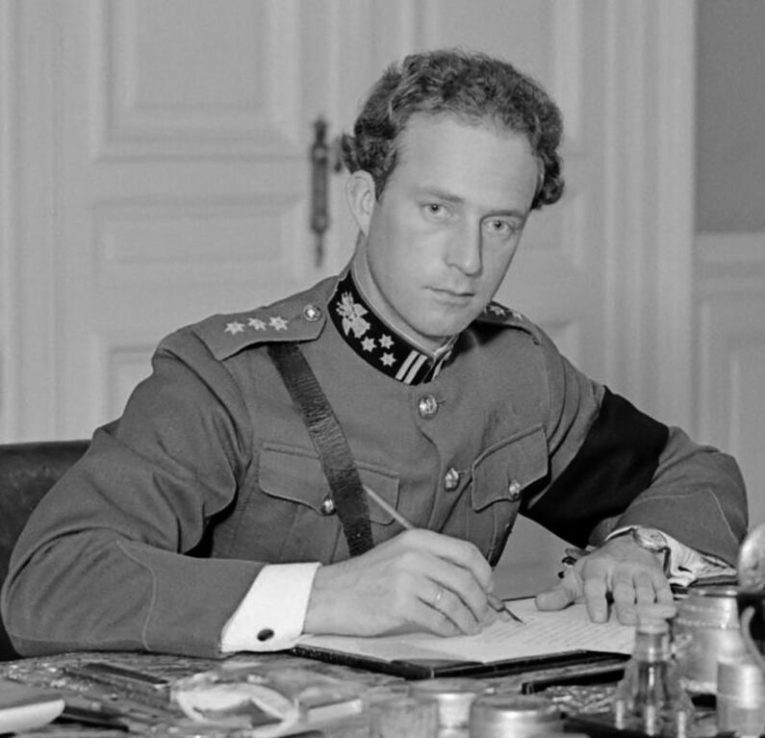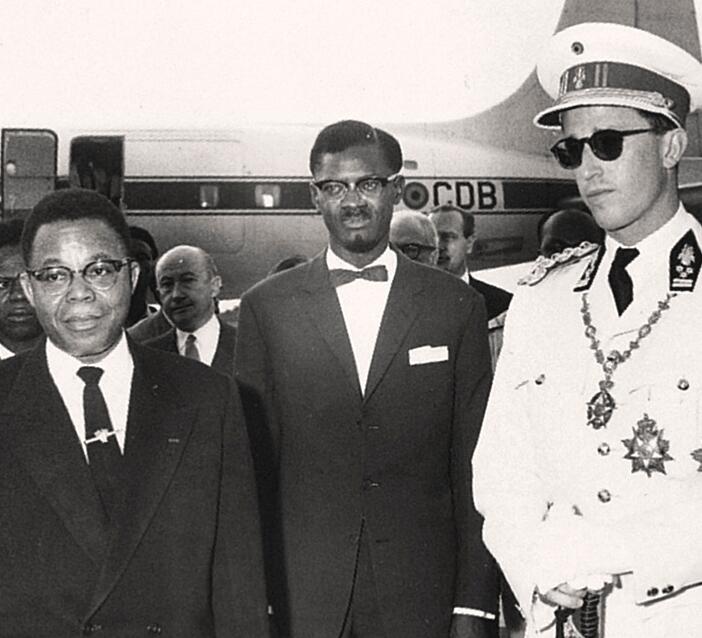Postwar
Financially, Belgium had a favorable starting position at the end of the war in 1945. The country was relatively little war-torn. Exports of uranium and other metals from the Belgian Congo had brought in considerable foreign exchange reserves, which had increased by large revenues from the Allied transit through the Belgian territory during the last months of the war. In the post-war years, Belgium had considerable current account surpluses, but unemployment rose.
The King’s position
In the years following the war, the question of King Leopold 3’s position played a major role. The socialists, communists and some liberals believed that the king acted unconstitutionally when he refused to obey the government in exile in 1940 and that he had acted to accommodate the Germans during the occupation. Furthermore, they criticized his marriage to Liliane Baels, later Princess de Réthy. They demanded that he abdicate. The Christian-social party, on the other hand, supported the king. In 1945, a temporary reign was established under the King’s brother, Prince Charles.
The National Assembly decided in 1950 that the king should resume his duties; but the opposition parties boycotted the vote. The day after, the king returned. The opposition, under the leadership of the socialists, organized strikes and demonstrations, especially serious were the unrest in the French-speaking parts of the country. Tranquility was restored by King Leopold delegating his authority to his son, Crown Prince Baudouin. On July 16, 1951, Leopold abdicated, but retained a royal title and an apnea, and the crown prince became the reigning king under the name Baudouin 1 (Boudewijn 1).
Foreign Policy
Belgium’s foreign policy in the post-war years was based on close cooperation with the western countries. In 1944, an agreement was signed with the Netherlands and Luxembourg on a customs union which was developed in 1948 (the Benelux Union ). In 1947, the country joined Western European economic cooperation through the Marshall Plan. In 1948, a military alliance was established in Brussels between the Benelux countries, the United Kingdom and France ( Western Union ). In 1949, Belgium joined the Atlantic Pact. The European movement gained strong support in Belgium, and several of the country’s politicians, primarily Paul-Henri Spaak, played a prominent role in the development of European cooperation. In March 1951, the Benelux countries, France, Germany and Italy signed the agreement – The European Coal and Steel Community and in March 1957 the Treaty of Rome on the European Common Market.
Belgian Congo
The economic conditions were difficult, especially for the coal industry, where the equipment was outdated and the marketing conditions difficult. At the same time, the situation tightened in the Congo. In 1960, Belgium agreed to discuss the independence of the colony, in May the same year negotiations were held on the future economic relations between Belgium and Congo, and on June 30 the colony was proclaimed independently in the presence of the Belgian king. But shortly afterwards, fighting broke out between Belgian and Congolese forces. The crisis led to major political and economic difficulties for Belgium. Relations with the African states were particularly bad, and several African countries severed diplomatic ties with Belgium.
In 1963, a settlement was reached between Belgium and the Congo, which included a scheme for Congo’s foreign debt. When the civil war broke out in Congo in January 1964, the situation became difficult for many Belgians who stayed there. The rebels held hundreds hostage in Stanleyville (Kisangani), and in November Belgian paratroopers intervened and freed them. The episode led to a worse relationship between Belgium and Congo. The relationship between Belgium and the Congo was further aggravated by mutual accusations of non-compliance with agreements. Belgium ceased its development aid to Congo in September 1966 until the situation had improved. A larger number of Belgians left Congo in 1967.
Domestic Policies
At the same time, there were major problems at home. The new government changed the tax laws in 1962 despite strong protests from the liberals and the right wing of the Christian-social party. Furthermore, a comprehensive rationalization was carried out in the coal industry which had marketing difficulties.
But in particular, the language issue was the cause of contention. In 1962/1963, a language limit was set across the country; in the north (55 percent of the population) the Dutch became the official language, in the south (33 percent) French and along the border in the east (0.6 percent) German. The city and the Brussels area (11 percent) became bilingual. During the treatment of this scheme, the conflict between the two large groups of people raged. In 1965 there was another government crisis on the language issue, when the distribution of seats in the National Assembly was revised.
In connection with the solemnity of the transition from colonial rule to independence on June 30, 1960, King of Belgium Baudouin 1 came to Léopoldville (Kinshasa). Here he was welcomed at the airport by Congo’s first President Joseph Kasavubu (left) and the country’s first Prime Minister Patrice Lumumba (center).
The regional contradictions
In 1973, the first part of a comprehensive constitutional reform was implemented. It divided Belgium into three regions (Flanders, Wallonia and Brussels) and three cultural communities, a Flemish, a French and a German with each cultural council. The contradictions were evident in the political institutions. Both the socialists, the liberal and the Christian-social parties were divided into a Flemish and a French-language section. In addition, purely regional parties such as Volksunie and the far- flung Vlaams Blok received considerable support in Flanders, while similar parties in Wallonia and Brussels were largely less successful (Rassemblement Wallon and Front démocratique des francophones).
Attempts to transfer further power to the regions were stranded due to opposition from the Flemish socialists, who were not happy with the position of Brussels. In 1977, the so-called Egmont Pact, which proposed to transfer significant power from the central government to a federal Belgium, was also halted. However, the regions gained some internal self-government, primarily on cultural issues. The conflict peaked in 1980, when there was great unrest and direct clashes between outlying groups from the two population groups.
The regional conflict characterized Belgian politics throughout the 1980s. It was not until 1988 that a constitutional reform was adopted that turned the country into a federal state with the three autonomous regions of Flanders (Dutch), Wallonia (French) and Brussels (bilingual). The first two phases of the reform were implemented in 1988 and 1989, while the third phase was postponed to 1993 due to considerable internal disagreement about the content.
After 1993, Belgium is a federal state with three regions, where the interests of the linguistic minorities in the different regions are also taken care of. The hope is that the tripling will reduce the cultural and linguistic contradictions in the country.

